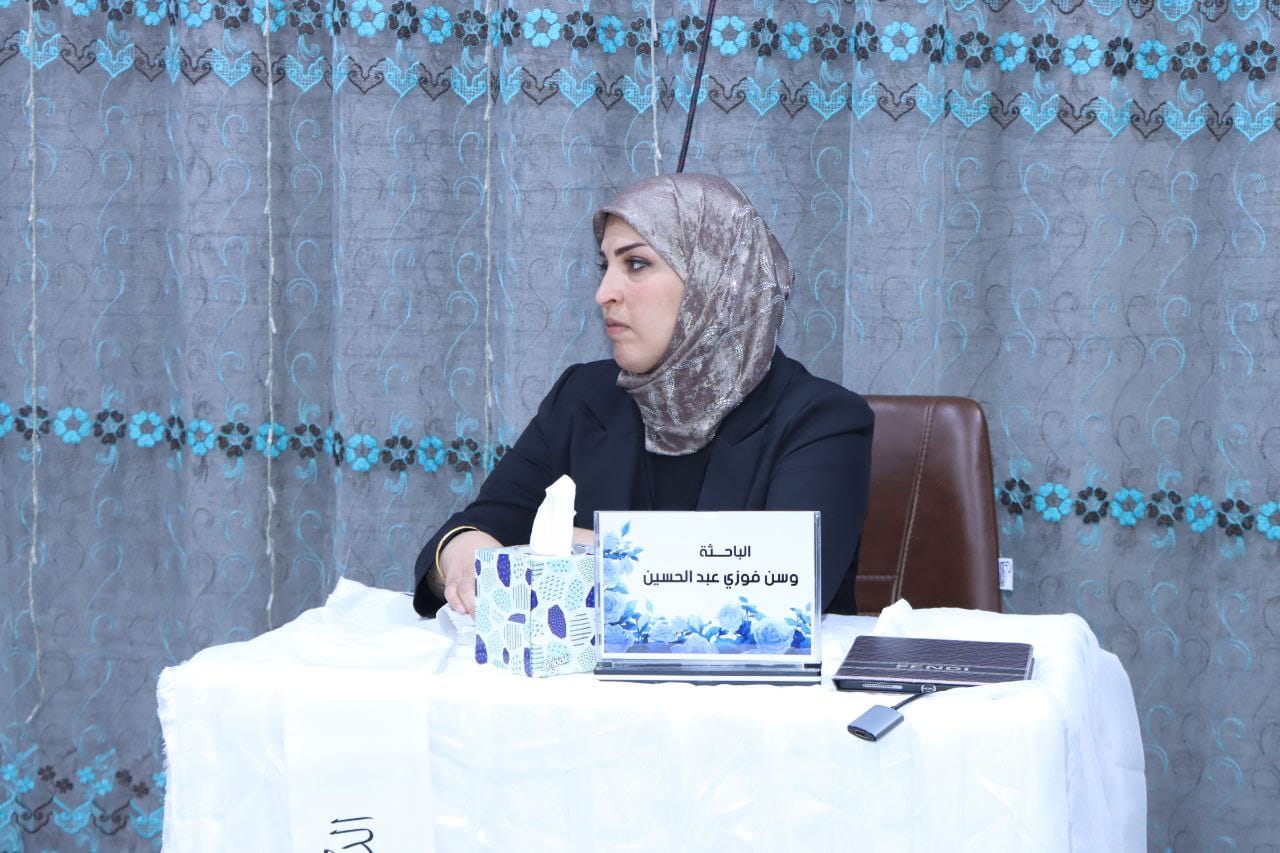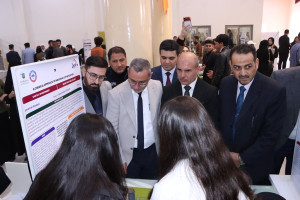
The College of Education for Pure Sciences, Department of Biology, discussed a doctoral thesis on
(Anatomical changes in the plant Arabidopsis thaliana, variety COl0, under stressful conditions of salinity and lighting and the effect of the growth regulator Pacloputrazol)
The thesis submitted by the researcher (Wasan Fawzi Abdul Hussein Jassim)
This study was conducted in the Plant Physiology and Plant Tissue Culture Laboratory in the Department of Life Sciences / College of Education for Pure Sciences - University of Basra for the period from 3/28/2022 to 5/25/2023, to investigate the anatomical responses at the level of the structural organs of the mouse ear plant Arabidopsis thaliana L., variety Columbia Zero Col.0 (i.e. non-mutant), namely: leaves, stems, roots and at the level of organelles (chloroplasts) under the influence of light stress and salt stress and the role of the growth regulator Paclobutrazol (PBZ) in influencing these Responses. After fixing the conditions of the growth chamber in terms of relative humidity 65%, temperature 2 ∓20 Celsius and light/dark periods (8/16).
The interests of researchers in the field of biological stresses in the last decade have turned to studying and testing anatomical responses at the tissue level and the level of their fine structure as accurate indicators of the degree of plant response.
The thesis aims to
Study the effect of two types of environmental stresses, namely light intensity and increased salinity, on some anatomical parameters of the organs of the mouse ear plant Arabidopsis thaliana L. Col. 0, namely the root, stem and leaf using a light microscope.
And to study the effect of light intensity and increased salinity on the fine structure of chloroplasts of the mouse ear plant leaf using a transmission electron microscope.
And to study the effect of light intensity and increased salinity on the concentration of chlorophyll pigment and the effectiveness of the antioxidant enzymes Superoxide dismutase (SOD) and Catalase (CAT).
The study concluded that increasing the light intensity had a significant stimulating effect in increasing the values of the studied anatomical parameters for each of the root (root diameter, vascular cylinder diameter and epidermal thickness), stem (stem thickness, xylem tissue thickness, bark tissue thickness and epidermal tissue thickness) and leaf (leaf thickness, PL:SL ratio and number of stomata). The addition of PBZ also had an additional positive effect in increasing the values of the anatomical parameters for each of the root, stem and leaves.
The low and high concentration of NaCl, when interacted with the low concentration of PBZ, had a significant positive effect in increasing the thickness of the epidermis and the thickness of the bark tissue of the stem, as well as for the anatomical parameters of the leaf, specifically the PL:SL ratio. While the low and medium concentrations had a significant positive effect in increasing the values of the anatomical parameters of the root (vascular cylinder diameter and cortex thickness) when interacted with the studied salt concentrations.
Increase in the activity of SOD enzyme in response to increased light intensity and its interaction with PBZ.
Increase in the concentration of chlorophyll pigment with increased light intensity and its interaction with PBZ.
Increase in the activity of SOD and CAT enzymes with increased salt concentration and its interaction with PBZ concentrations.
The chloroplast, due to the membrane structure of its formation, is the most influential organelle and responds to environmental and non-environmental stresses.









